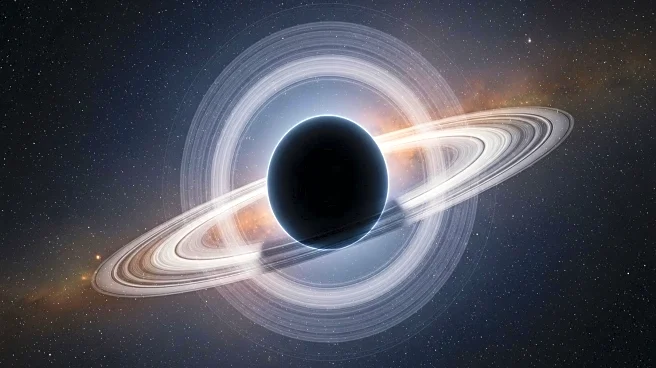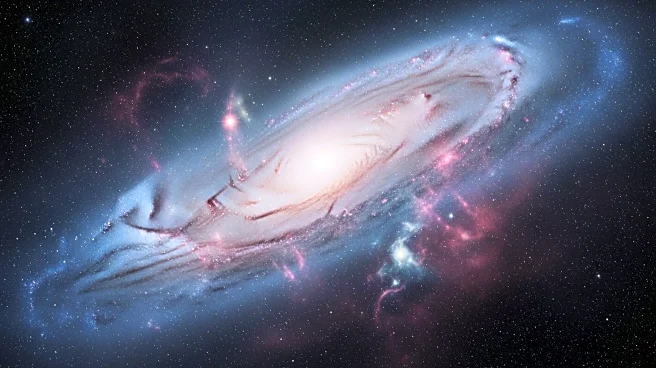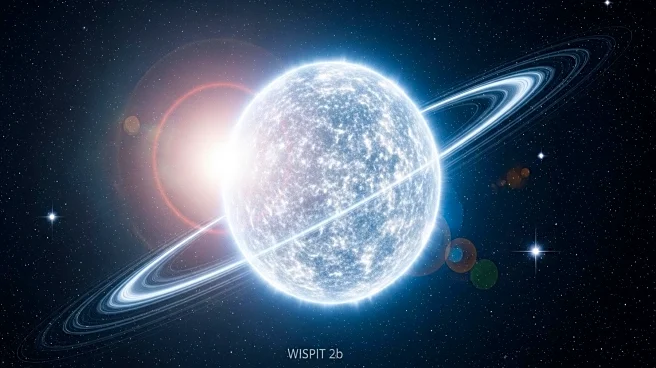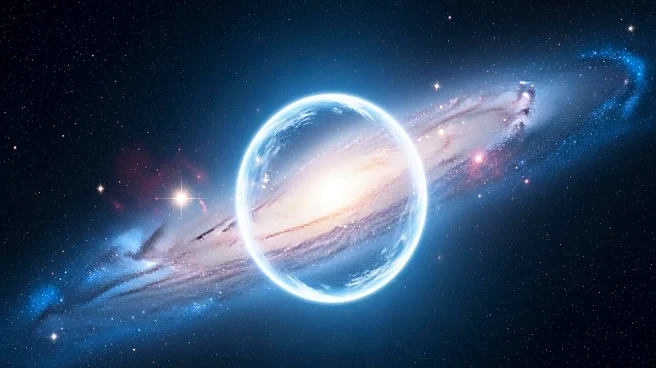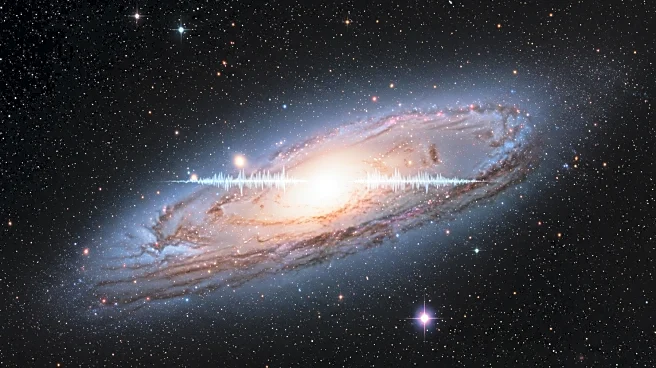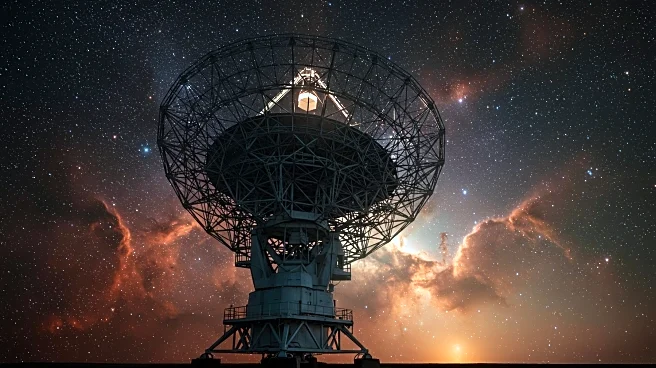What is the story about?
What's Happening?
An international team of astronomers, including researchers from the University of Galway, has discovered a new planet named WISPIT 2b. This planet, estimated to be five million years old, is believed to be a gas giant similar in size to Jupiter. The discovery was made using the European Southern Observatory's Very Large Telescope in Chile's Atacama Desert. WISPIT 2b is located approximately 430 light years away in the constellation Aquila. The planet was detected at an early stage of formation around a young star that shares similarities with our Sun. The study, co-led by Leiden University, the University of Galway, and the University of Arizona, has been published in the Astrophysical Journal Letters.
Why It's Important?
The discovery of WISPIT 2b is significant as it provides a rare opportunity to study planet formation at an early evolutionary stage. This is only the second time a confirmed planet has been detected in such a stage around a young version of our Sun. The presence of a multi-ringed dust disk around the planet offers a unique laboratory to study planet-disk interaction and evolution. Understanding these processes can advance our knowledge of how planets form and evolve, potentially offering insights into the diversity of exoplanet systems compared to our own solar system.
What's Next?
The discovery of WISPIT 2b is expected to spark further research and discussion within the scientific community. Researchers will likely conduct follow-up observations to study the planet's formation and its interaction with the surrounding disk. The system may become a benchmark for future studies on planet formation models, providing valuable data for astrophysicists and astronomers.
AI Generated Content
Do you find this article useful?
